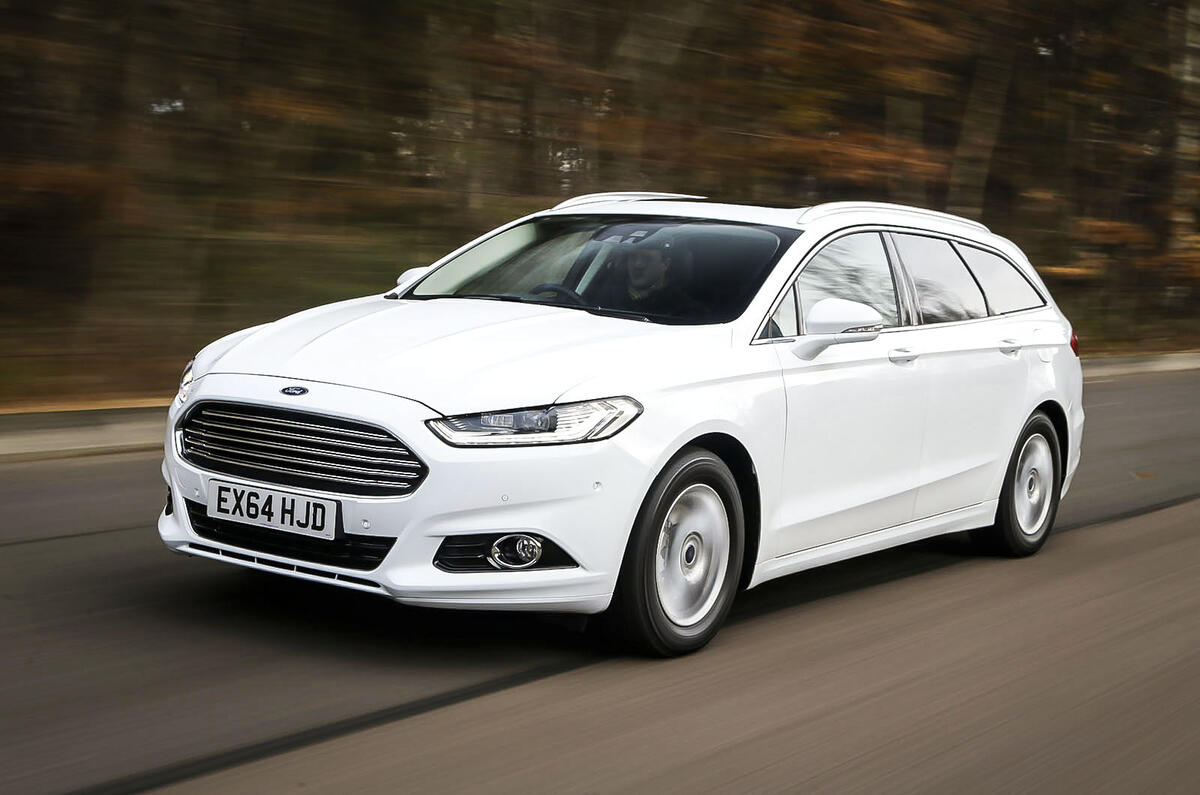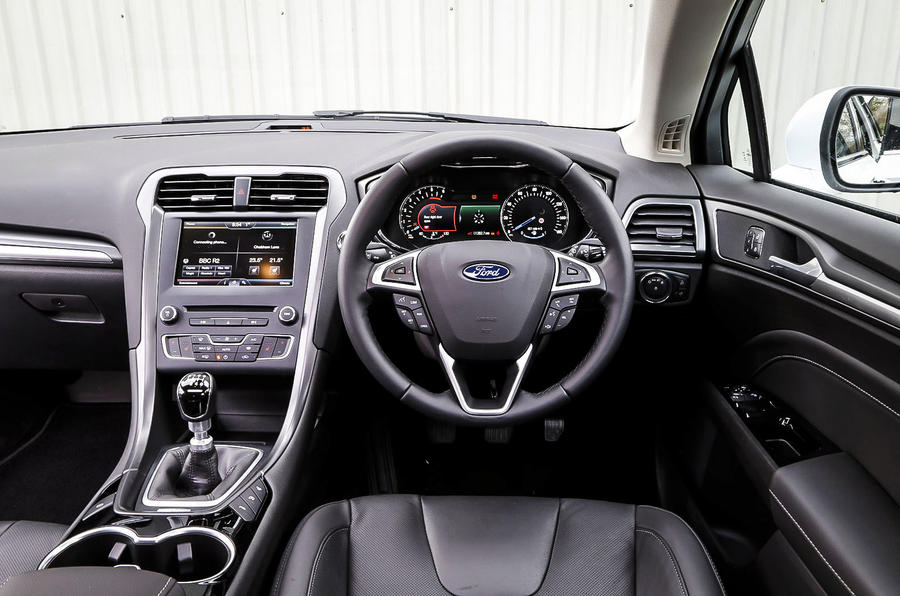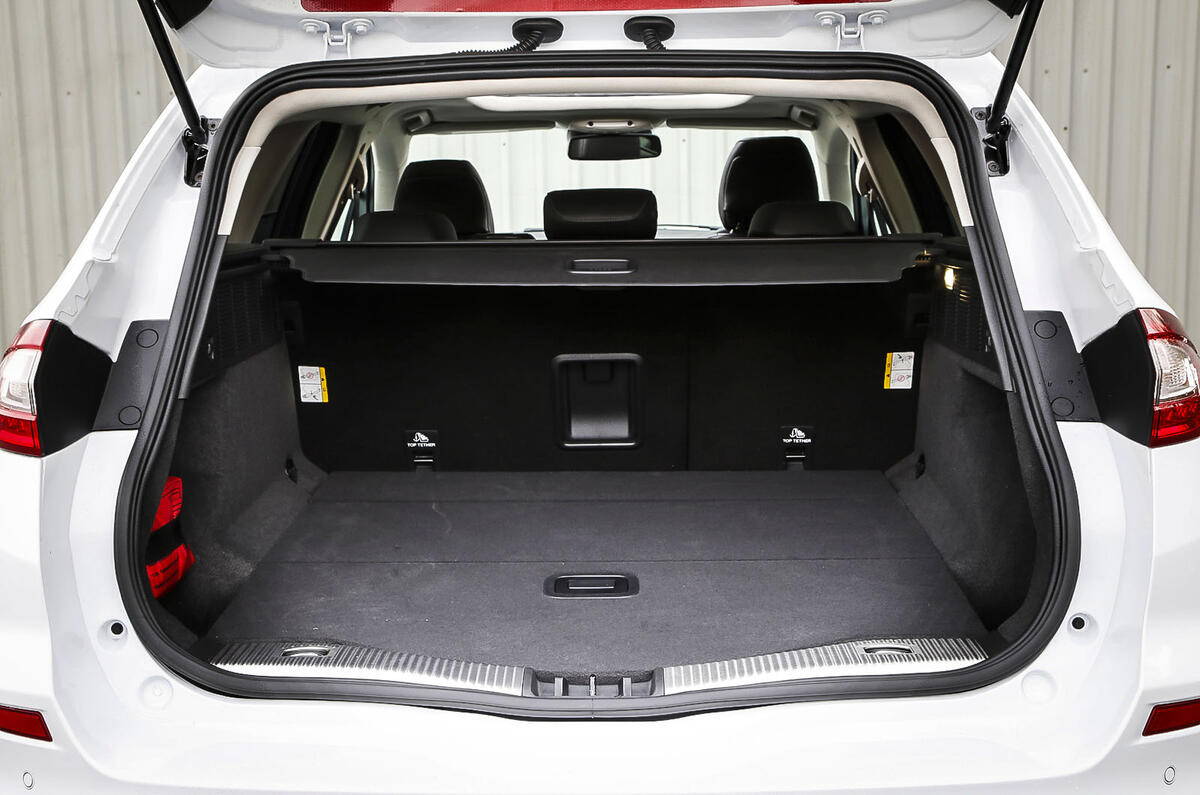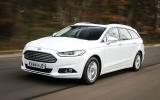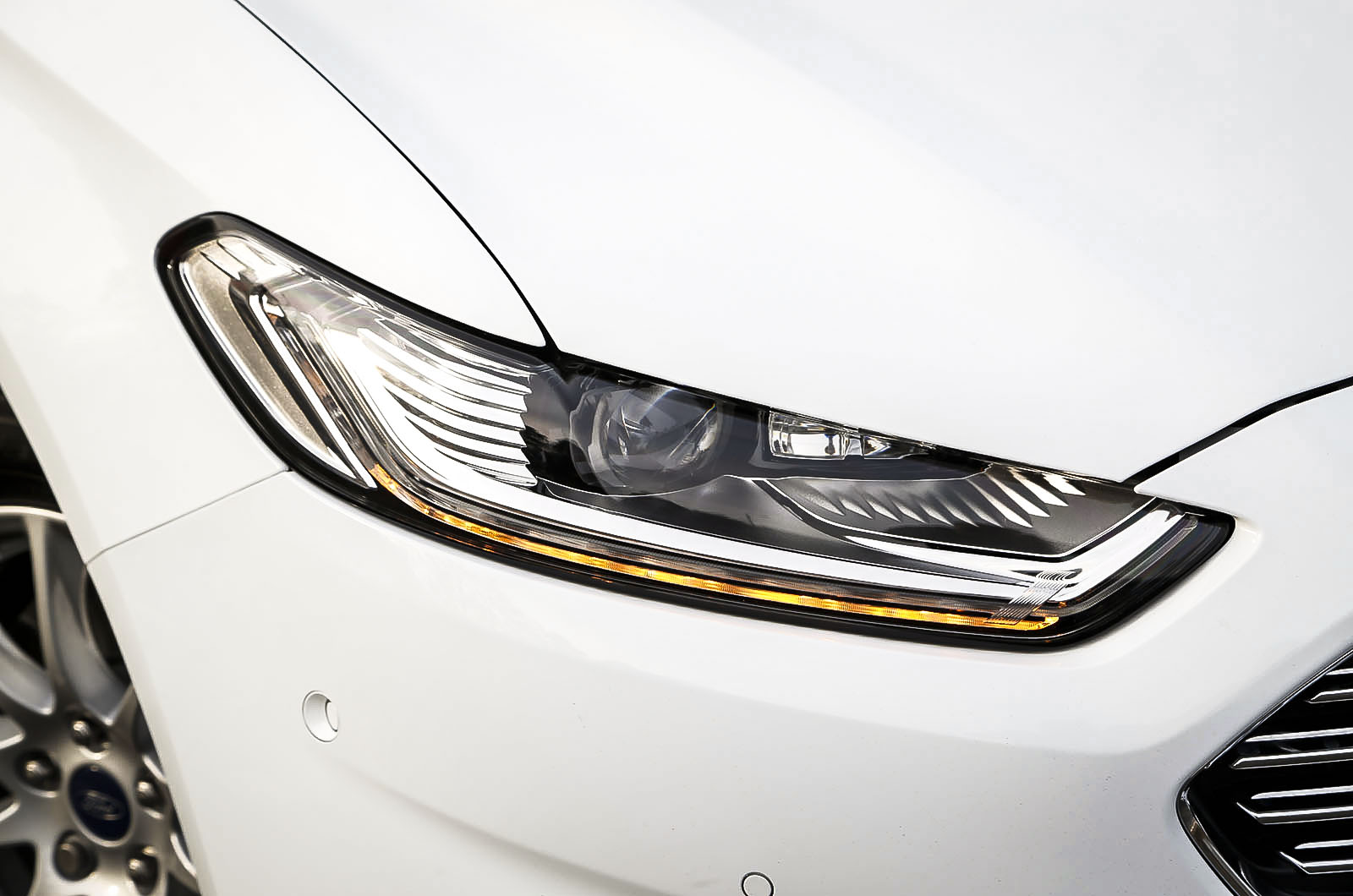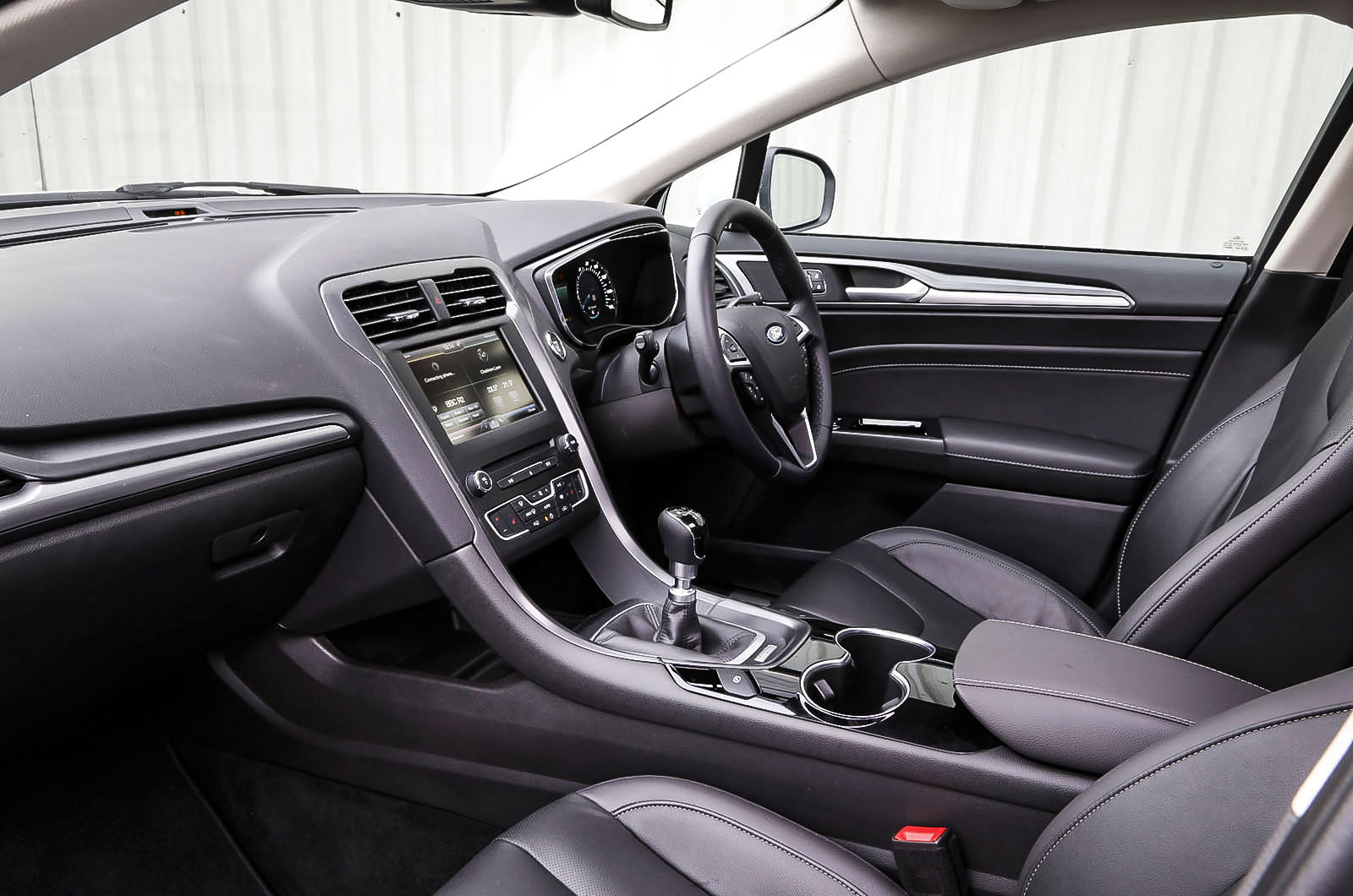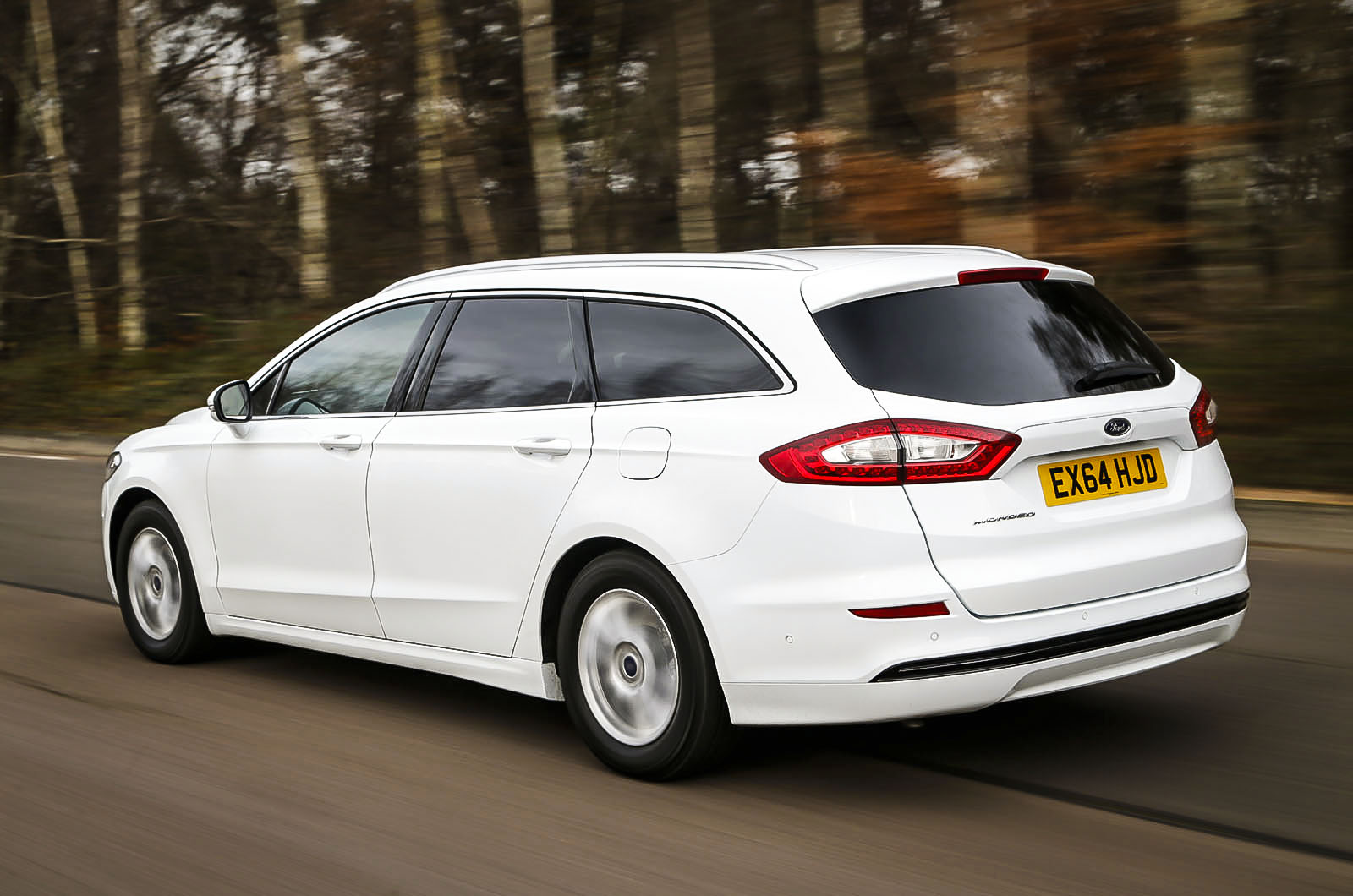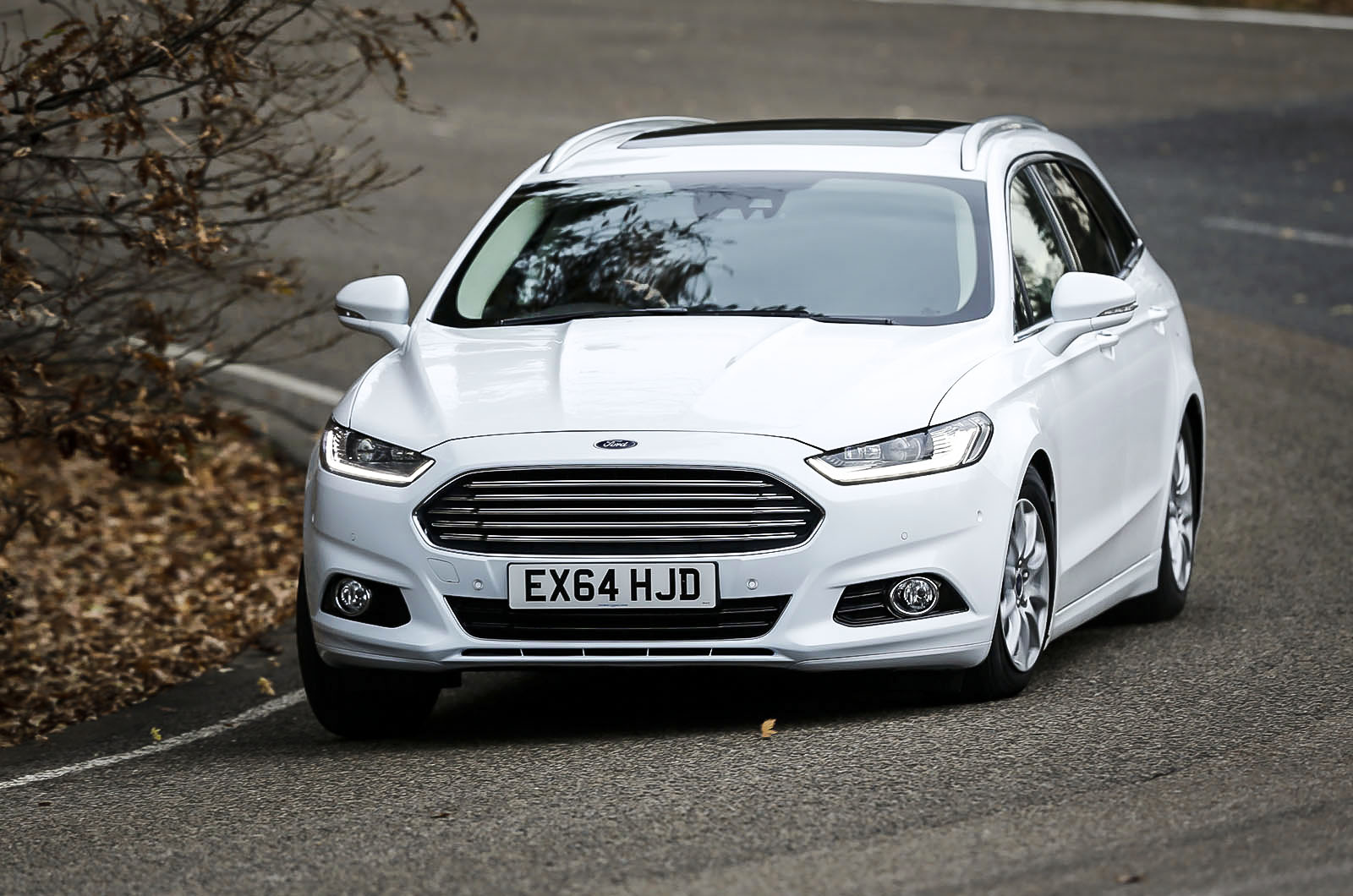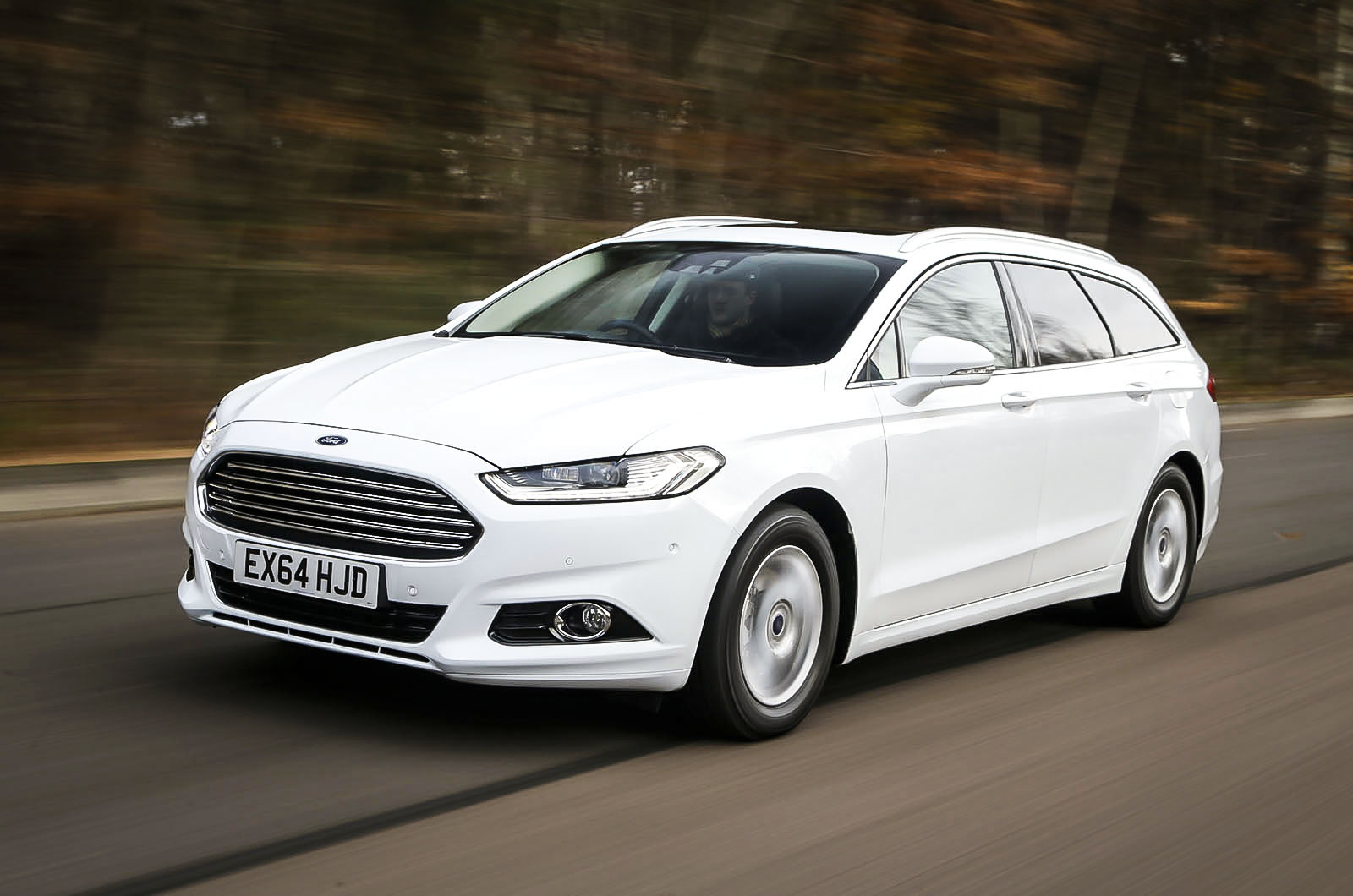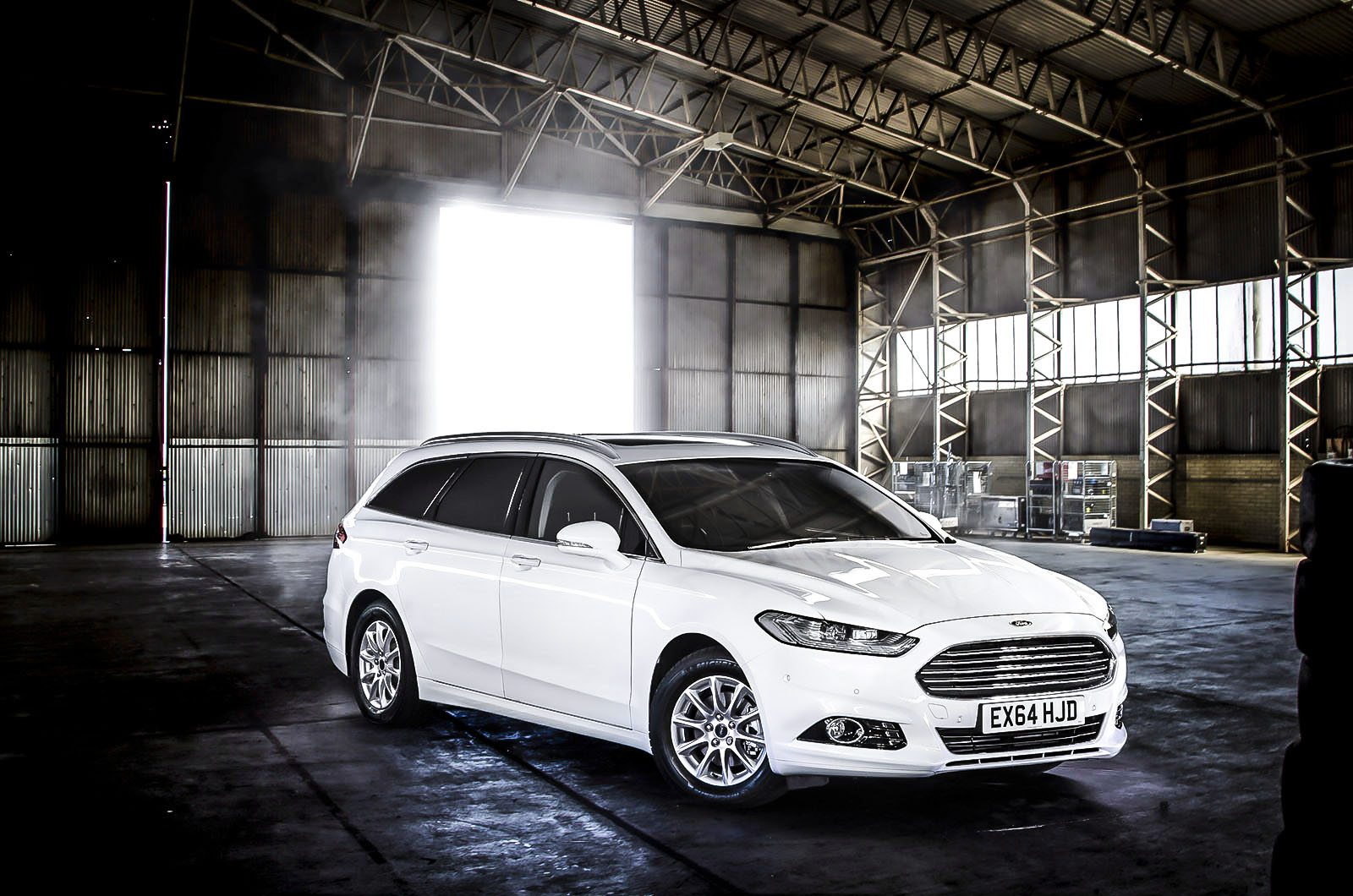By the end of its strung-out life cycle, the previous Mondeo’s cabin had become a curious concoction. Huge to sit in and fiddly to operate, it took an age to get comfortable in but then looked after you as sweetly as an old armchair.
Its Euro-centric nature was clearly discernible in the quality of trim intended to convince potential Audi and BMW buyers that the mainstream wasn’t worth fleeing. So while an elderly multimedia system backdated it like a cathode ray tube TV, the surrounding topography still had some substance about it.
The latest Mondeo, with its mid-Atlantic accent, looks more at sea. Size is not an issue. Ford’s flagship has always been built to accommodate everything from offspring to workmates, and the new model is no different. Three abreast in the back isn’t a problem if you’re not going far, and the estate, with its extended roofline, will seat six-footers in the back without issue.
The sense of spaciousness won’t be lost on the driver, either. While front headroom isn’t exceptional, the Mondeo remains a high-shouldered greatcoat of automotive presence. The estate’s load space isn’t peerless – the latest Volkswagen Passat wagon eclipses its peak volumes – but that doesn’t prevent the high, flat and wide boot floor from looking like all the capacity you’ll ever need.
However, as it was primarily built to satisfy a continent where the description ‘full size’ applies as much to lifestyle choice as it does a vehicle class, the new Mondeo’s ample proportions were never in question.
Where it satisfies less completely is from the most important seat in the house. The dashboard, with a huge, well ordered centre console, has taken a leap forward on layout and incorporates Ford’s latest Sync 3 system. But while everything makes perfect sense, it is not necessarily a boon to the fingertips or eyeballs.
In too many places, the Mondeo’s dull matt plastics and Lego-block aesthetic make its Stateside positioning clear. This is a car intended to see off Toyota, Honda, Hyundai and Nissan, not face off with premium marques, nor even, worryingly, Volkswagen.
That small shortfall in perceived quality won’t do much damage to the UK’s core Mondeo buyer base, but those flitting between old-fashioned and new premium-brand large family cars have been given one reason less to return to the Blue Oval.
Ford’s ‘Sync 3’ touchscreen multimedia set-up is fitted to every Mondeo trim level, but there is no auxiliary controller on the centre console to marshal it — and you do miss one at first. Navigating the touchscreen functions takes some getting used to, but there are permanent shortcut keys in the corners of the 8.0in screen, making life a little easier.
That the system itself isn't as quick to respond to your inputs as others in this field is a bit frustrating. The voice control programming for the sat-nav works quite well, however, although the mapping is only averagely clear and detailed. When Ford upgraded its infotainment system from Sync 2 to Sync 3, Ford ensure it upped the ante with its system, and included smartphone integration, pinch-to-zoom gestures, 3D mapping and autocorrection when typing in locations.
As for the trims themselves, Ford has simplified the range from seven core trims to five - Zetec Edition, ST-Line, Titanium Edition, ST-Line Editon and Vignale. Entry-level Zetec Edition models come with 17in alloy wheels, projector headlights, LED rear lights, parking sensors, cruise control, electrically folding wing mirrors and a Quickclear heated front windscreen included as standard. Inside Ford's family car you'll find dual-zone climate control, an electric parking brake, leather wrapped steering wheel and Ford's Sync 3 infotainment system complete with DAB radio, sat nav, Bluetooth and smartphone integration.
Upgrade to ST-Line and the Mondeo gains a sportier look thanks to its 18in alloy wheels, bodykit, gloss black exterior trim, sports suspension, front sports seats, alloy pedals and a dark headliner. Also there is keyless ignition, premium velour floor mats and ambient interior lighting thrown into the package. Bulking out the middle-of-the-range now is the Titanium Edition trim which includes 18in alloy wheels, automatic headlights and wipers, keyless entry and ignition, electrically adjustable and heated front seats, a leather upholstery, lane departure warning and traffic sign recognition over the Zetec Edition models.



